I am wrapping up the rebuild of the PE Berkshire and one of the handrails are missing. So...would piano wire work?...or..any suggestions?.
Replies sorted oldest to newest
I am wrapping up the rebuild of the PE Berkshire and one of the handrails are missing. So...would piano wire work?...or..any suggestions?.
Maybe, but it is VERY stiff and strong stuff, and what ever you do, do NOT try and cut the stuff with a pair of normal cutters. The Piano Wire is SOOO HARD, that it will put a nice groove in both sides of the cutter jaws. I use my Dremel cut-off disc to "cut" the Piano Wire to the desired length.
While piano wire can be used for that application, it is unnecessarily hard to form and cut. Brass stock would be much more suitable, and it is what most all the brass loco manufacturers use on there models.
Bob
The piano wire is a PIA to bend, especially if you don't get it right the first time, bend it back, and then it breaks. Detail Associates sells wire in different sizes, and walthers usually has it in stock.
The piano wire is a PIA to bend, then it breaks.
Speak for yourself. Wile a bit Pia to bend, with the correct wire bending tools it's the best for handrails and trainphone antenna's because it flexes and springs back. I find it very tough to break as the the diameter of the wireused is increased. Use of brass wire in the same diameter will easily get you kinks in the brass wire.
Bending it is not that difficult but as HW says avoid using a small diagonal cutter to cut it. Abrasive tools are the best here.
Pete
Got a gas burner stove? If you determine the area of any bend, heat that area of the wire in the flame of the gas stove until it just begins to glow red/orange (I trust you'd know to be holding the wire with pliers or some such tool rather than your bare pinkies!). As soon as you see the glow, remove the wire from the flame and let it air cool. It should then be pliable enough in that heated/cooled region for a reasonable bend.
It's called annealing. (Well, it worked for me, anyway.![]() )
)
I've also used this technique with brass flat wire (Detail Associates stock) to bend the flat stock in its widest direction..to make those nifty ladder verticals on the ends of cabeese that go up and over the roof...like a shepherd's crook.
But, back to the piano wire question.... The hardness of the wire, IMHO, is actually a good thing for the straight runs...say, along the length of the boiler. It helps to minimize further distortion of the handrail with handling/storage in the future. It's just those pesky bends at the front of the engine to take the handrail down to the pilot platform, and, perhaps, around the boiler front, where you need some softening of the wire to help out. You will NOT be able to re-harden the wire after annealing it, however. Ergo, those bent areas will be as vulnerable to handling/storage distortion as if you had used soft wire throughout.
But, the recommendation to NOT use your best diagonal cutter pliers is a good one. A cutting disk, or a tool specifically made for cutting hardened wire is the correct choice. Of course, here again, if the area to be cut has been annealed first, that might allow the use of a more common tool without damage. I use a disk, FWIW.
Piano wire can be bent without annealing, though. It is, indeed, a PITA, for which a bending mandrel/tool is most useful. I believe MicroMark sells such a tool. I know the RC airplane customers at our store (LHS) are big into creating bends in piano wire, because they're trying to make use of the 'memory' quality of the hardened wire in creating 'spring' devices...e.g., landing gear struts, etc.
But for a purely cosmetic wire configuration...the handrail on a steam engine...the hardness of piano wire is, well, a mixed bag in the blessings department.
So, just a suggestion. One man's opinion/experience.
KD![]()
Thanks for the very useful tips folks...![]()
Bruce
Guitar strings. Much easier to cut and bend. Buy singles the right dia.
Of course, they to eventually rust.
Greg
These handrails were done with brass wire, threaded through holes in the vertical posts.
Turntable project.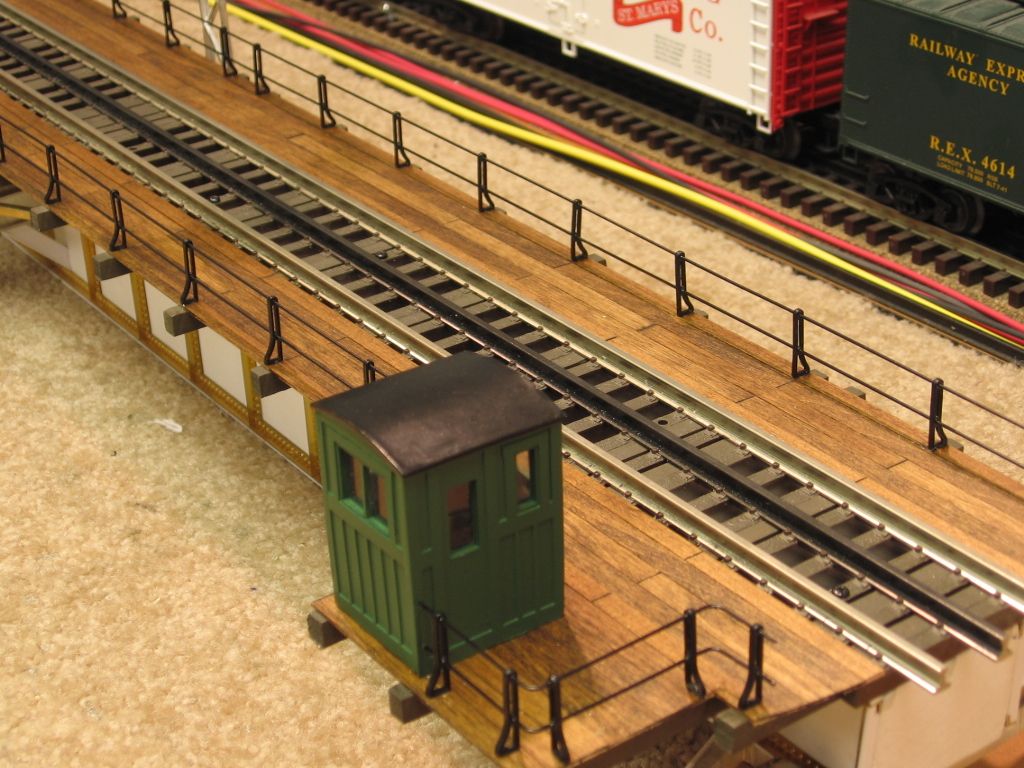
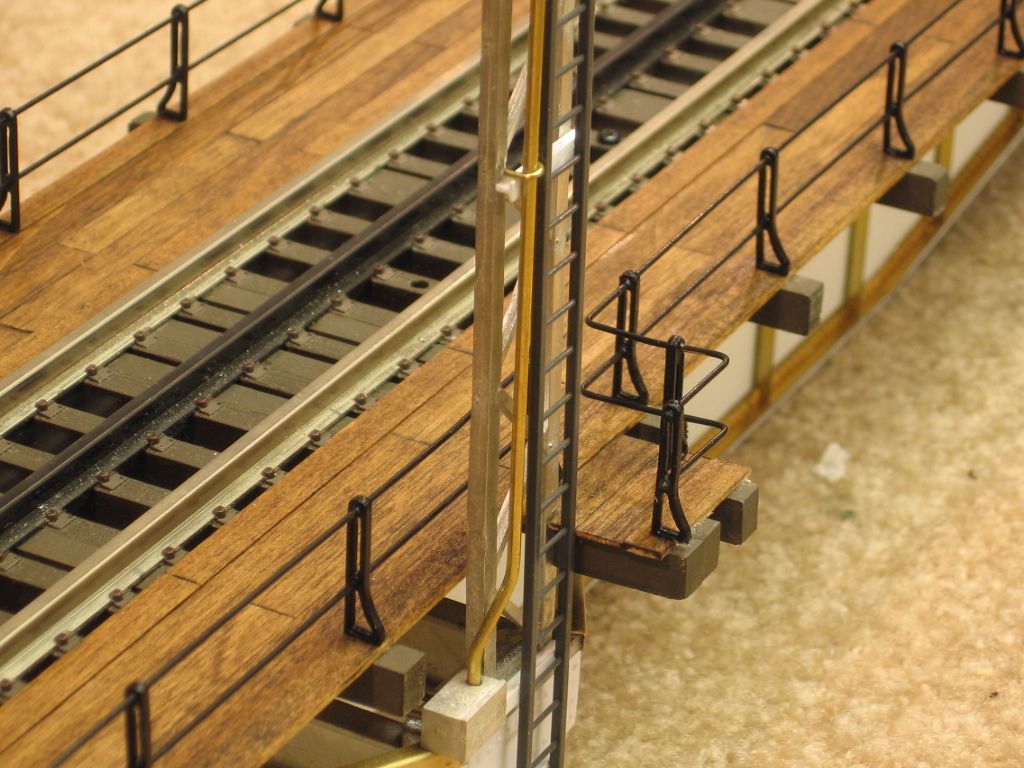
Other brass detail. With round nose plyers you can do a relatively good job of conduit bends and offsets. The geometry of a 30/60/90 triangle is a big help when making offsets.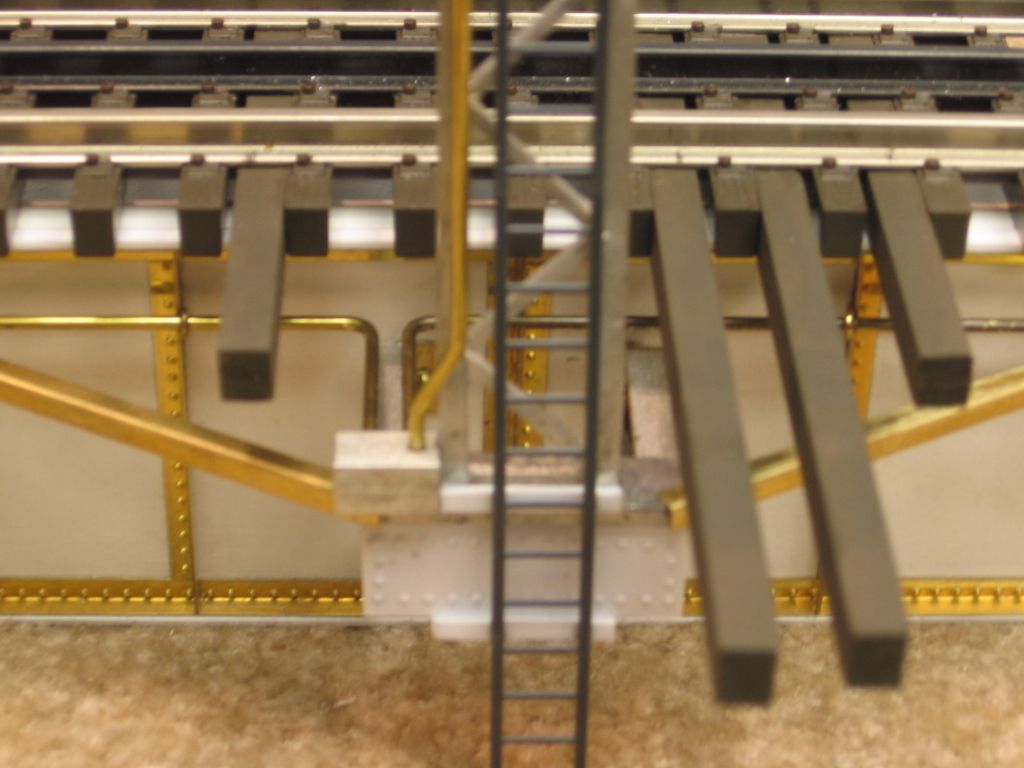
Another project that required brass wire. Radio phone on a set of Pennsy E8's.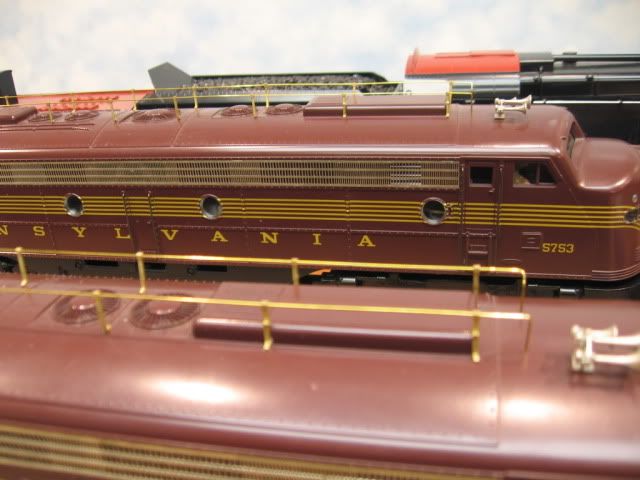
Downspouts on a Korber 304 house.
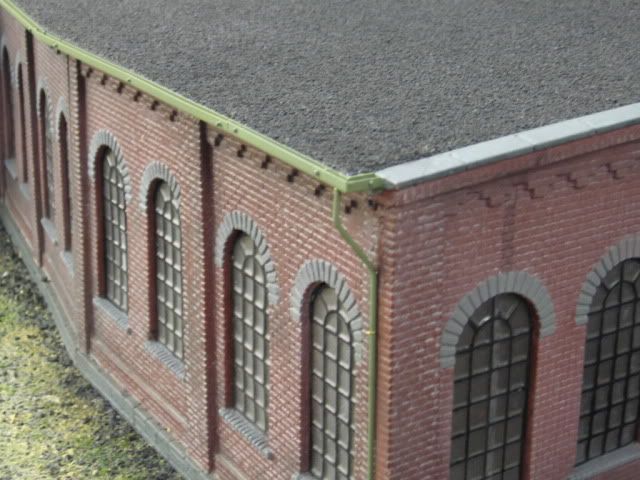
I have used both steel and brass solid round stock to form shapes. The steel,being much stiffer, than brass will maintain the formed shape, more rigid, for equivalent cross section diameters. The trade off is the steel is much harder to shape form than brass. Since you have a steam engine, if possible, remove the other handrail and use it as a template to form the new handrail. MicroMark has two rounded nose pliers to form radiused shapes. I have some steam locomotives and I am guessing that the handrail you are missing has two bends between 90 to 180 degrees. Place the removed handrail on a sheet of thin cardboard, hold rigidly, and pencil trace the shape. As you form the new handrail, overlay it on the traced shape and keep working the handrail until it overlays the traced shape.. If you use brass/steel and have available round shapes, i.e., bolts, small diameter copper tubing, nail sets you may be able to use these items as a die to form the inside rolled radii. Once formed use 300/400 grit sand paper to scuff the handrail for painting.
I just measured the hand rails on a Lionel and a 3rd Rail engine. They both measure .040". I don't have any .040 at the moment but do have .047" piano wire. Using only the tools pictured I made this bend. Both have smooth jaws. No heat or extra effort required. Smaller gauge would require even less effort.
Pete




